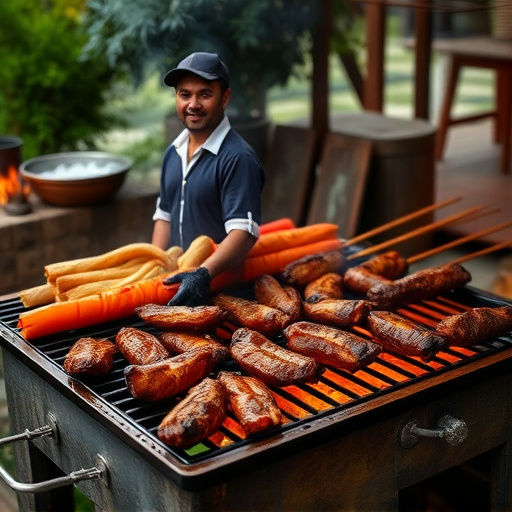Choosing the right rib cut (baby back vs. spare) for your grill style enhances BBQ experience. Dry brine with salt and spices for a crispy crust and juicy ribs. Use marinades and sauces to tenderize, flavor, and complement meat tastes. Slow cooking transforms tough ribs into tender, delicious treats over low heat.
Get ready to satisfy your rib-loving barbecue fans with the perfect culinary experience! This guide is tailored for enthusiasts seeking the ultimate BBQ ribs. From selecting the ideal rib cut for your grill to mastering dry brining, marinades, and slow cooking techniques, we’ve got you covered. Elevate your BBQ game with our comprehensive steps, ensuring juicy, tender ribs that will leave a lasting impression. Discover secrets to crafting mouthwatering ribs, perfect for any occasion, and become the star of your next grill gathering.
- Choosing the Perfect Rib Cut for Your Grill
- Dry Brining: A Step-by-Step Guide to Flavor Infusion
- Marinades and Sauces: Enhancing Your BBQ Ribs
- The Art of Slow Cooking for Tender, Juicy Ribs
Choosing the Perfect Rib Cut for Your Grill
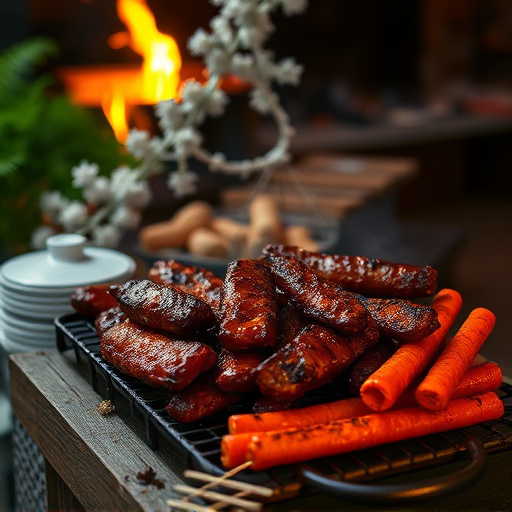
When it comes to grilling perfect BBQ ribs, selecting the right cut is half the battle won. The most popular rib cuts are typically baby back ribs and spare ribs, each with its unique characteristics. Baby back ribs, as the name suggests, come from the baby back section of the pig, between the loin and shoulder. They have a smaller bone structure and tend to be tenderer, making them ideal for those who prefer a more delicate rib experience. On the other hand, spare ribs are meaty and robust, with larger bones that provide an extra crunchy texture when grilled.
For an authentic BBQ ribs recipe, consider the cut that aligns with your grill’s cooking style. If you’re a fan of slow-cooked, fall-off-the-bone ribs, baby back ribs might be the perfect choice. Their smaller bone size allows for easier handling and faster eating! Alternatively, spare ribs excel at locking in juices and developing a delightful crust when grilled at high temperatures. Experimenting with different cuts will help you discover your preferred taste and texture, taking your BBQ rib game to new levels.
Dry Brining: A Step-by-Step Guide to Flavor Infusion
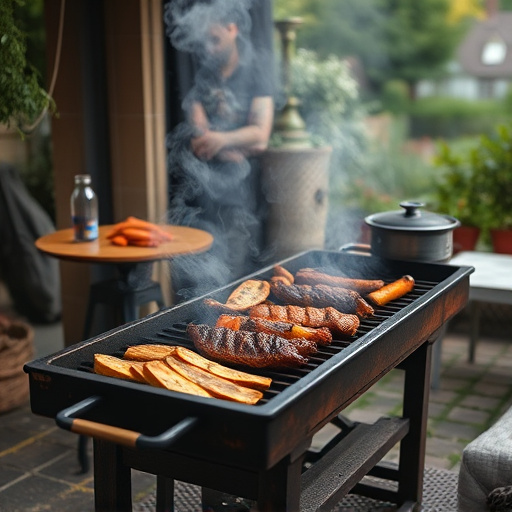
Dry brining is a simple yet effective method to enhance the flavor of your BBQ ribs before grilling. This technique involves curing the ribs with salt and various spices, creating a delicious crust that locks in juices and adds depth of taste. Here’s how to do it step-by-step:
1. Start by removing any membrane or fat from the bone side of the ribs. Pat them dry with paper towels. In a small bowl, mix coarse sea salt, black pepper, garlic powder, paprika, and any other spices you prefer. Rub this mixture all over the ribs, ensuring every inch is coated. Place the ribs in a resealable bag or container, making sure they are snugly packed. Seal it tightly and refrigerate for 2-4 days, turning them occasionally to ensure even brining.
Marinades and Sauces: Enhancing Your BBQ Ribs
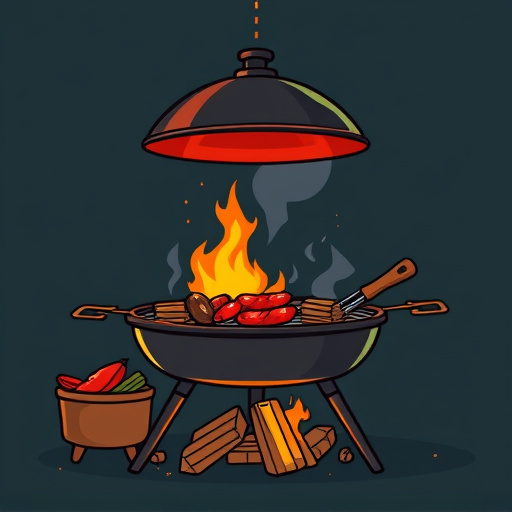
Marinades and sauces are essential components in elevating your BBQ ribs recipe for grill enthusiasts. Marinades, with their blend of spices and acidity, penetrate the meat, tenderizing it and infusing flavors that penetrate every fiber. This process not only makes your ribs juicier but also adds depth to the overall taste profile.
Choosing the right sauce is equally crucial. Whether you opt for a classic tomato-based sauce or a sweet and tangy BBQ glaze, the key is to select a flavor profile that complements your ribs without overwhelming them. A good sauce should enhance the natural flavors of the meat while providing a delightful contrast with each mouthful. Experimenting with different marinades and sauces can transform your ordinary grill session into an extraordinary culinary adventure for rib-loving barbecue fans.
The Art of Slow Cooking for Tender, Juicy Ribs
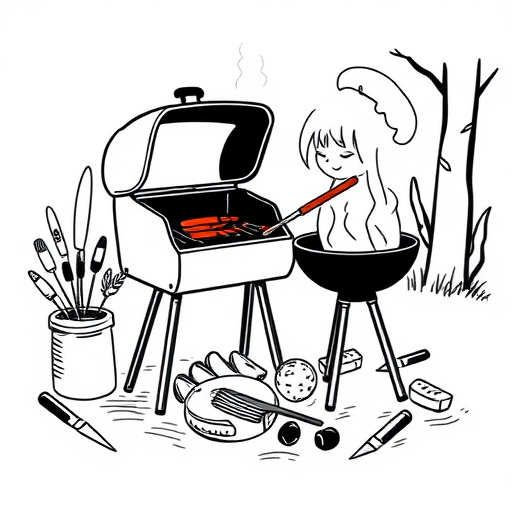
For barbecue enthusiasts seeking the perfect ribs, embracing the art of slow cooking is a game-changer. This technique ensures that the ribs cook gently over low heat, allowing for a metamorphosis from tough to tender and juicy. Start by selecting your favorite cut of ribs—baby back or spare rib, each with its unique charm—and rubbing them down with a dry rub spice blend. This step adds flavor as the spices penetrate the meat during slow cooking.
Once rubbed, place the ribs on the grill, but instead of direct heat, opt for indirect cooking. This means the coals or heat source is positioned to one side, creating a gentle, indirect heat that surrounds the ribs. Keep the grill temperature lower, around 225-250°F (107-121°C). The beauty of slow cooking lies in patience; it takes several hours for the collagen in the ribs to break down, resulting in tender meat that glistens with juices.
